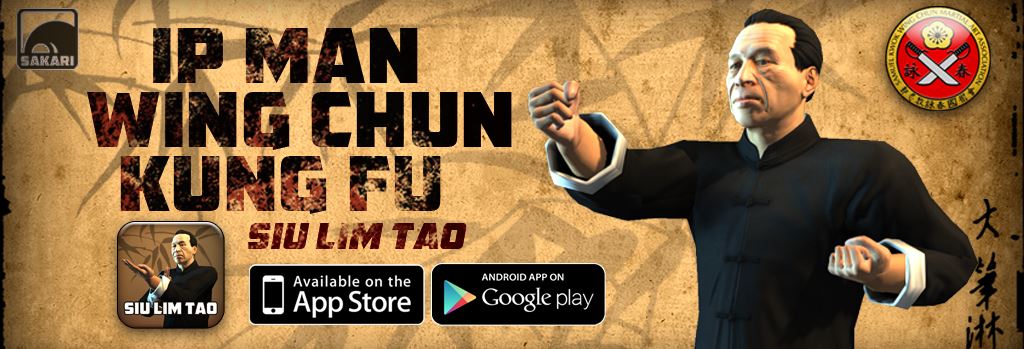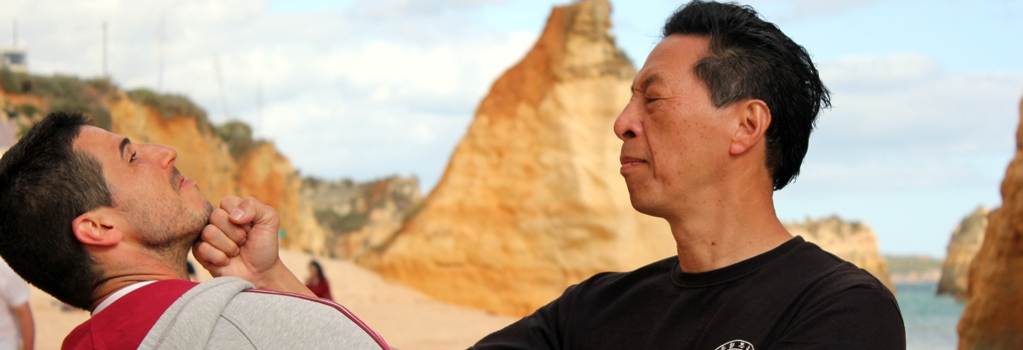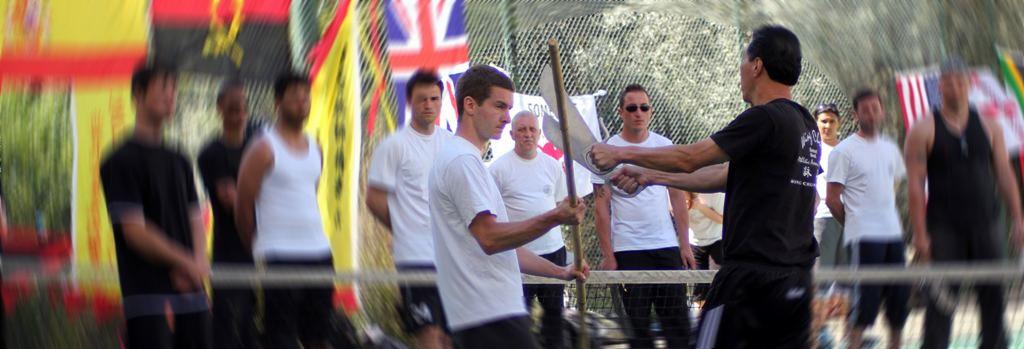The stages of learning
Article by Tony Massengil added on 3 Aug 2012. Last updated on 3 Aug 2012.
The Learning Process
Extract taken from Chapter 3 of Master Kwok's book Mastering Wing Chun, available on Amazon.
Stages to learning a skill like martial arts
In the self-improvement classic 'The New Psycho-Cybernetics The Original Science of Self-Improvement' by Maxwell Maltz, there is an explanation of what Maltz calls the four stages of learning.
These four levels explain the progression from knowing nothing of the skill, to mastery of the skill. If studied, these four levels can be seen to be present in any physical skill development. In kung fu, these levels are very important as they can outline exactly when a skill can be relied upon in a violent encounter.
In the martial arts we begin by teaching the most basic of methods using a stair step process to advance to more advanced skills. Mastery is judged not by knowing, or being able to perform a technique, but in how the technique can be relied upon under surprise attack in a very dynamic and violent setting. The mere knowledge of and ability to perform a technique when given time to think about the method, is utterly useless in a fighting situation. The technique must "perform itself" in order to be relied upon.
The Stages
Dr. Maltz explains the four stages of learning as follows:
1. Unconscious Incompetence
2. Conscious Incompetence
3. Conscious Competence
4. Unconscious Competence
As you review these four levels, you can see the progression. As a student of the martial arts, we come into the school generally thinking we know at least how to do some rudimentary skills like punching. But upon being taught the proper method of punching, which includes such considerations as balance, power generation, and angle of execution, we realize that we didn't really know how to throw a punch.
At this time we pass from level one (Unconscious Incompetence) to level two (Conscious Incompetence). We now know that we do not know how to throw a proper punch. So we go about learning the proper mechanics of the technique. As soon as we are introduced to the technique and are able to reproduce satisfactory results in performing the method, we have passed from level two into level three (Conscious Competence). However, the technique will still not be a reliable method of self-protection that can be used in a violent encounter.
In a fight, you seldom have time to think, but must react. This means that even if you are able to do a technique and reproduce satisfactory results with the technique, it is still not a tool that can be relied upon in self-protection. In order for the technique to be reliable, you must have entered the fourth level of learning (Unconscious Competence). This is when you will experience "Conditioned Reflex" in your technique. This is when the technique 'Does itself'.
It takes time and repetition in training in order to Biuld your kung fu into a conditioned reflex. Patience is as important as talent in the learning process.
It is important that the practitioner does not attempt to force the learning process. Becoming impatient will only hinder the ability to learn. Grandmaster Ip Chun warns, Everything in nature has its timing. When you plant a seed, you water it, give it sunlight and nurture it. As time passes you begin to see the plant grow. If you pull on the plant to help it grow, you will damage it rather than help it. The same is true of your Kung Fu training. The term Kung Fu means 'Energy and Time'. It takes both to master Wing Chun.
There is a systematic progression to Wing Chun training. The foundation is laid with the first form Siu Lim Tao. Then the student moves on to Chum Kiu, the second form, followed by Biu Gee, the third and final hand form of Wing Chun. During the time between beginning Siu Lim Tao and the completion of Biu Gee training, the student will be taught the guiding principles, and training methods that will develop balance, coordination, sensitivity, energy development and use, as well as fighting applications.
After the empty hand forms and related training is complete, the student will be taught the Mook Yan Jong "wooden dummy form" which will help coordinate footwork, body energy, as well as defensive and counter-offensive techniques. After this the student will be taught the two weapons of the Wing Chun system, the Luk Deem Boon Kwun "Long Pole" and Bart Jam Dao "Double-Knife". Both of these teach the principles of long range and short range weapons application.
Some instructors may introduce the wooden dummy training before or simultaneously with the Biu Gee form training. The order of introduction of this training is largely one of personal preference of the instructor. However, prior to learning either the Biu Gee or wooden dummy, the foundation of Siu Lim Tao and Chum Kiu training must have been solidly laid. We must crawl before we walk, and walk before we run. To expect to progress outside of the natural process will only bring disappointment.



